Contents
Ever feel like your affiliate links are hiding in plain sight? You’ve put in the work, crafted the perfect content, but somehow, you’re still scratching your head trying to figure out the reasons why your affiliate links aren’t getting clicked.
Well, you’re not alone. Many affiliate marketers face the same struggle. And the truth is, a few simple tweaks might be all you need to turn things around!
In this post, we’re breaking down 10 sneaky reasons why your affiliate links aren’t getting clicked and, more importantly, how to fix them.
From blending in too much with the rest of your content to missing that all-important trust factor, we’ll cover the common mistakes that might be costing you valuable clicks.
By the end of this read, you’ll know exactly what’s going wrong and how to start driving more clicks (and commissions) from your affiliate links.
The Importance of Affiliate Link Clicks
Affiliate link clicks are the heart of affiliate marketing. Without them, your strategy comes to a standstill, and all the hard work you’ve put into crafting content, building trust, and recommending products goes unrewarded.
Each click is a step closer to a potential sale, which is the ultimate goal. More clicks mean more chances for conversions and commissions, directly influencing your earnings.
But it’s not just about the revenue – those clicks tell you something even more valuable: your audience is engaged. When someone clicks your link, they’re showing interest in what you’ve shared, proving they find value in your content.
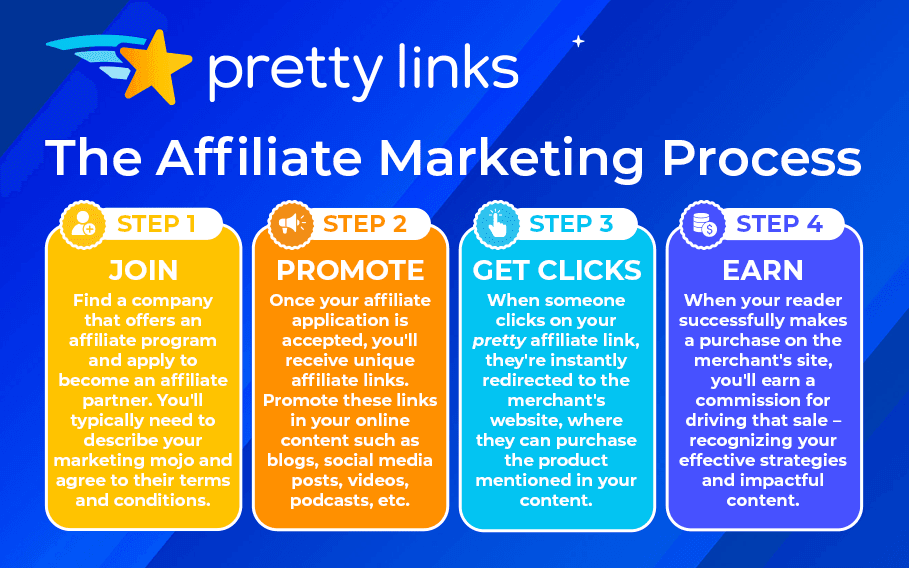
All in all, affiliate link clicks tie everything together – from audience engagement to earning commissions, they’re the lifeline that turns your efforts into results.
10 Reasons Why Your Affiliate Links Aren’t Getting Clicked
If your affiliate links aren’t getting clicked, it’s a clear sign that something’s off – whether it’s the placement, messaging, or the trust you’ve built with your audience.
Let’s cut to the common reasons why your affiliate links aren’t getting clicked and, more importantly, how you can turn things around.
1. Your Affiliate Links are Too Long and Complicated
One of the main reasons why your affiliate links aren’t getting clicked could be their length and complexity.
An affiliate link’s long strings of random characters and numbers look unprofessional and often times suspicious. When a link appears confusing, your audience may hesitate to click on it, unsure of where it will lead.
A messy, hard-to-read URL can also detract from the overall readability of your content, making it less likely that people will engage with the links you’ve worked hard to include.
What should you do?
Don’t let a messy link undo all the trust you’ve built with your audience. The solution is simple: make your affiliate links short, clear, and easy to understand.
Short links are easier on the eyes and help build confidence in what you’re offering. With PrettyLinks, you can transform those long, cryptic URLs into clean, branded links that look professional and trustworthy.
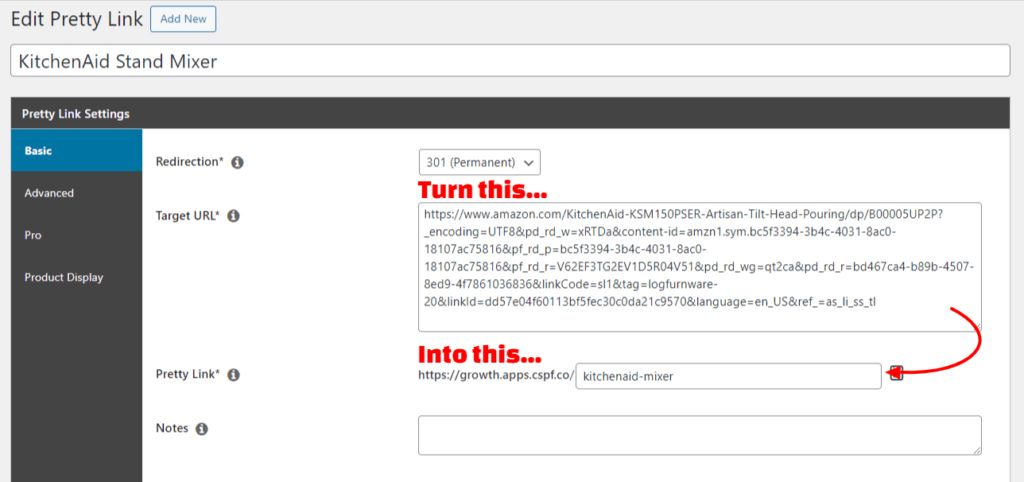
With a polished link, your audience knows exactly what to expect, boosting their confidence and making them more likely to click and engage with your content.
2. Your Affiliate Links are Buried and Hard to Find
Even the best affiliate link won’t get clicked if your audience can’t find it. Poor visibility and placement can seriously hurt your click-through rates, making all your hard work less effective.
Think about how most people read blog posts – we tend to skim, focusing on headlines, bullet points, and standout sections.
If your affiliate links are buried deep in long paragraphs or tucked away at the very end, they’ll likely get overlooked.
What should you do?
By strategically placing your links, you can eliminate one of the reasons why your affiliate links aren’t getting clicked.
Here’s how to make sure your links stand out:
- Above the Fold: Include at least one affiliate link within the first few paragraphs. This way, it’s visible without requiring readers to scroll.
- In Headings or Subheadings: Placing links in headings or subheadings draws attention since these areas are naturally eye-catching.
- Contextually Relevant Spots: Position your links where they make the most sense, such as embedding them within sections discussing product benefits.
- Call-to-Action (CTA) Buttons: Use bold CTA buttons for your affiliate links. These grab attention and tend to drive more clicks than regular text links.
- End of Sections: Add a link at the end of each section to capture readers who are ready to take the next step after reading through the content.
With PrettyLinks, you can also create stunning visual product displays that ensure your affiliate links are impossible to miss. These displays come complete with a quick-glance product description, eye-catching visuals, and a clear call-to-action.
This combination provides your audience with all the information they need to make a decision – without needing to hunt for the link:
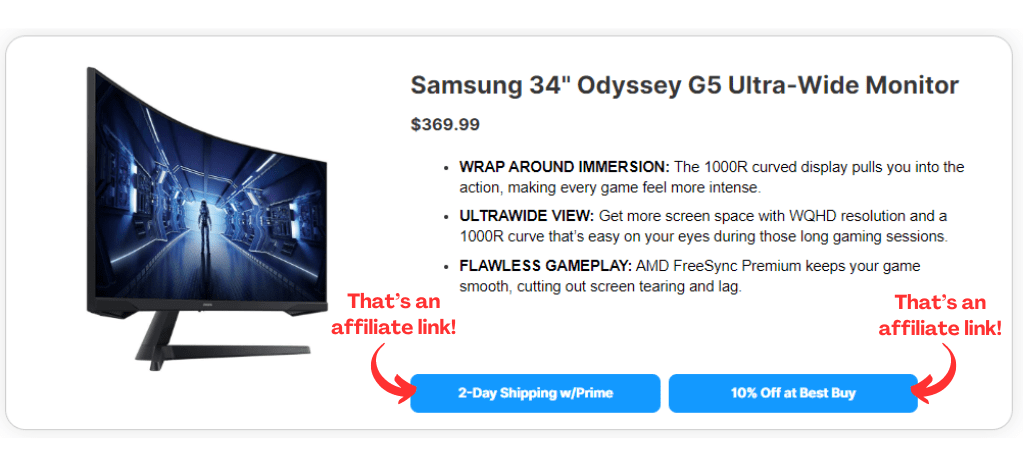
The visually appealing format grabs attention right away, while the concise description and CTA buttons encourage clicks.
By incorporating product displays, you’re offering a seamless, engaging user experience that boosts click-through rates and helps your affiliate links shine.
3. You’re Promoting Products that Don’t Interest Your Audience
One of the more obvious reasons why your affiliate links aren’t getting clicked is a mismatch between your product and your audience’s interests.
No matter how great the product, if it doesn’t match what your readers are looking for, they’ll scroll right past it. Whether it’s an audience mismatch or irrelevant content, the result is the same – low clicks and wasted effort.
For instance, promoting football gear to an audience that’s more interested in fashion will naturally fall flat. When there’s a disconnect between what your audience expects and what you’re offering, you’ll see fewer clicks and less engagement with your content.
What should you do?
What you need to do is align the affiliate products with your audience’s interests. When you understand your audience and focus on what they care about, promoting the right products becomes easy.
It’s all about offering solutions they actually want, which makes your recommendations feel natural and boosts your chances of getting those valuable clicks.
Here’s how to do it:
- Know Your Audience: Use surveys, website analytics, and social media interactions to get a clear picture of your readers’ interests and preferences. The better you understand them, the easier it is to promote products they’ll actually care about.
- Segment Your Audience: Not all readers are the same, so break your audience into groups based on demographics, interests, and behavior. This lets you tailor your promotions for each segment, ensuring relevance.
- Promote Relevant Products: Make sure the products you recommend fit seamlessly into the context of your content. For example, if you run a fitness blog, focus on promoting workout gear, supplements, or fitness programs – items your readers are naturally interested in.
- Personalize Content: Customize your content to speak directly to your audience’s specific needs. Personalization makes your affiliate promotions feel relevant and valuable, enhancing the overall experience and encouraging clicks.
By aligning your content and affiliate products with your audience’s interests, you create a more engaging experience, increasing the chances of driving clicks and boosting conversions.
4. You’re Overloading Content with Too Many Affiliate Links
While it might be tempting to pack your content with affiliate links, too much of a good thing can work against you. Overloading your content with links can overwhelm your readers and make it feel spammy.
When readers feel like they’re being constantly sold to, it can erode their trust and lead them to disengage. Plus, too many links can clutter your content, making it harder to navigate and less valuable overall.
What should you do?
Focus on providing value first. Your affiliate links should feel like a natural part of your content, not a distraction. A balanced approach keeps your content informative, with affiliate links as a subtle nudge instead of an overwhelming pitch.
To avoid affiliate link overload, PrettyLinks offers a handy Keyword Replacement tool that automatically places affiliate links throughout your content.
Even better, you can set a cap on how many links appear on a page, ensuring your content remains clean and engaging without overwhelming your readers.
>> See our Support Doc on Keyword Replacement
Keep your audience’s experience in mind, and they’ll be more likely to appreciate your recommendations and click through when it feels right.
5. Your Audience Doesn’t See the Value in the Product
Even the best product in the world won’t get clicks if your audience can’t see how it benefits them. It’s not enough to showcase features or make a recommendation – they need to understand how the product solves a problem or makes their life easier.
This disconnect happens when the value isn’t immediately clear, leaving your audience wondering, “What’s in it for me?” If they don’t have a reason to care, they won’t take action.
What should you do?
Clearly communicate what makes the product valuable and how it can solve a problem or fulfill a need for your audience.
To make your value proposition clear and compelling, try these approaches:
- Detailed Descriptions: Go beyond the basics by explaining what the product does and how it can make your audience’s life easier or more efficient.
- Benefits Over Features: Instead of just listing features, focus on how the product improves the user’s experience. For example, rather than saying “This software has a scheduling feature,” frame it as “This software helps you save time by allowing you to schedule tasks effortlessly.”
- Customer Testimonials: Use real reviews and testimonials to show how the product has helped others, adding social proof and making the value more relatable.
- Visual Aids: Add images, infographics, or videos that showcase the product’s value in action. Visuals help your audience better understand what the product offers.
- Comparisons: Compare the product to other similar options, highlighting its unique advantages and why it stands out.
By clearly outlining the product’s value, your audience will have a better understanding of why they should click on your affiliate links and engage with the product.
6. The Products You’re Promoting Aren’t Meeting Expectations
It’s one thing to talk up a product’s value, but if it doesn’t deliver, your audience is going to notice – and not in a good way.
Recommending low-quality or poorly reviewed products is a fast track to losing both your audience’s trust and their clicks.
If your readers sense that the products you’re endorsing don’t live up to the hype, they’ll be far less likely to engage with your affiliate links.
Even worse, if someone buys a product based on your recommendation and it turns out to be a disappointment, it could permanently damage your credibility.
All it takes is one bad experience to make them think twice before trusting your future recommendations.
What should you do?
To maintain trust and keep those clicks coming, focus on promoting high-quality, well-reviewed products that offer real value.
Do your homework: read reviews, check feedback, and whenever possible, test the products yourself.
By sticking to recommendations you genuinely believe in, you’ll not only build credibility but also strengthen the bond with your audience.
When they trust your judgment, they’ll feel more confident clicking your affiliate links, knowing you’re pointing them toward products worth their time and money.
7. You Haven’t Shared a Personal Experience with the Product
No matter how well-reviewed or valuable a product is, readers are more likely to engage when they feel a personal connection to the recommendations you make.
People want to know that what you’re recommending has worked for you, not just in theory, but in real life. Without that personal touch, even the best product can feel distant, and your affiliate links may go unnoticed.
What should you do?
To truly connect with your audience and make your recommendations more engaging, it’s important to go beyond just listing benefits – share your own personal experience with the product.
Your readers want to know that you’ve actually used the product and seen results firsthand. This adds a layer of authenticity and trust that can’t be achieved through facts and features alone.
Here’s how you can do that:
- Personal Stories: Share a real example of how the product helped you. Was there a specific challenge it solved? What did you enjoy most about it? Details like these make your recommendation feel more authentic and relatable to your audience.
- Authentic Testimonials: If you’ve received feedback from your community or other users, share their stories as well. These additional voices add credibility and social proof, which can be just as impactful as your own experience.
- Honesty and Transparency: Don’t gloss over the imperfections. Mention any downsides or areas where the product didn’t fully meet your expectations. Readers appreciate honesty, and acknowledging both the good and the not-so-good builds trust in your endorsement.
- Visual Proof: Show, don’t just tell. Include photos or videos of you using the product. Visual proof strengthens your endorsement, making it more tangible and trustworthy.
By making your endorsement personal and showing that you’ve genuinely benefited from the product, your audience is more likely to see the value and engage with your affiliate links.
8. Your Affiliate Links Are Broken or Lead to Dead Ends
You might have everything working in your favor – well-placed affiliate links, engaging content, and products your audience loves – but none of that matters if your links are broken.
Few things are more frustrating for users than clicking on a link only to land on a 404 error or a missing page. Not only does this create a poor user experience, but it also disrupts the flow of your conversion funnel.
What should you do?
A proactive approach can help prevent broken links from derailing your efforts. But don’t worry, proactive doesn’t mean extra work with PrettyLinks.
PrettyLinks’ Link Health feature makes it simple by automatically scanning for broken links and alerting you to fix them before your audience even notices.
9. Your Affiliate Products and Content are Outdated
As products evolve and new versions hit the market, sticking with outdated recommendations can make your content feel stale and out of touch. Promoting an older version of a product, especially one that’s no longer available or useful, can quickly become a missed opportunity.
Whether it’s a discontinued product or one that has lost its edge in today’s market, outdated recommendations leave your audience wondering why they should bother.
This is especially true for industries where innovation moves quickly – technology, fashion, and even health and fitness products. If your audience finds a better, newer option elsewhere, they may stop looking to you for the latest and best recommendations.
What should you do?
If you want to keep your content relevant and your affiliate links converting, here are some simple steps to follow:
- Give your affiliate links a regular tune-up: Double-check that the products you’re promoting are still available and up-to-date.
- Make content audits part of your routine: Set aside time to go over your older posts. You’ll catch outdated info and have the chance to update them with the latest versions of the products you’re promoting.
- Keep an eye on your evergreen content: Even your high-performing posts might need a refresh if the products you’re recommending are no longer relevant.
- Stay updated on product versions: If you’re promoting products that get frequent updates, like tech or software, make sure you’re always recommending the latest versions.
- Update older content with context: When you update a product link, let your audience know! Mention any improvements, or suggest a better alternative.
By keeping your affiliate content fresh and aligned with today’s products, you’ll engage your audience, provide more value, and keep your affiliate strategy effective.
10. You Haven’t Guided Your Audience with a Clear Call-to-Action
Sometimes, we overlook the simplest things. You’ve created great content, chosen the perfect product, but here’s the catch – are you actually telling your readers to click your affiliate link?
It’s easy to assume they’ll just figure it out, but without a clear call-to-action (CTA), even the most interested readers might not know what to do next. If you don’t give them a clear direction, they’ll likely leave without taking action.
What should you do?
Don’t leave your audience guessing – show them exactly what to do next. A clear, action-driven CTA is your way of guiding them toward the click.
READ >> How to Write an Effective Call to Action for Your Website
Also, don’t forget to make your CTA pop visually. Whether it’s a button or bold text, make sure it catches their attention. A well-placed, easy-to-spot CTA not only improves the user experience but also boosts engagement with your affiliate links.
Conclusion
Affiliate marketing can feel like a guessing game when you’re trying to find the reasons why your affiliate links aren’t getting clicked.
Chances are it’s something simple – like missing a clear call-to-action or promoting an outdated product. The key is catching these mistakes early and making the necessary tweaks to keep your audience engaged.
By tackling these common issues head-on, you’re setting yourself up for more clicks and better results. Plus, with PrettyLinks in your corner, managing and streamlining your links becomes second nature – you can focus more on connecting with your audience and less on troubleshooting.
So, what’s your next move? Start making those tweaks today and watch your efforts pay off.
Have you spotted any of these mistakes in your content? Drop a comment below and let us know how these tips are helping you out – we’re excited to hear your progress!
Love what you read? Let’s stay connected! Follow us on Facebook, Twitter, Pinterest, LinkedIn, and YouTube for more tips, tricks, and insights. And, don’t miss out on our exclusive content – subscribe to our newsletter today!
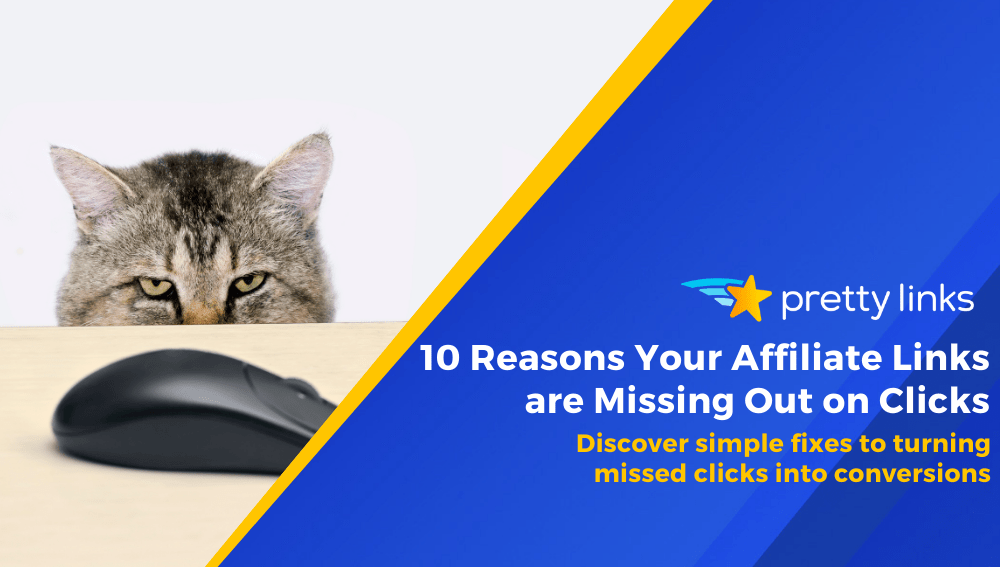
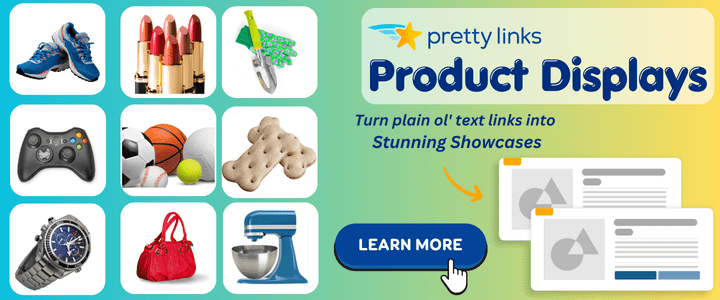
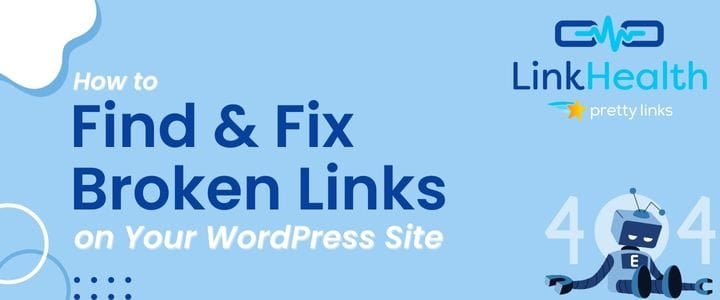


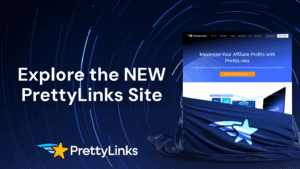


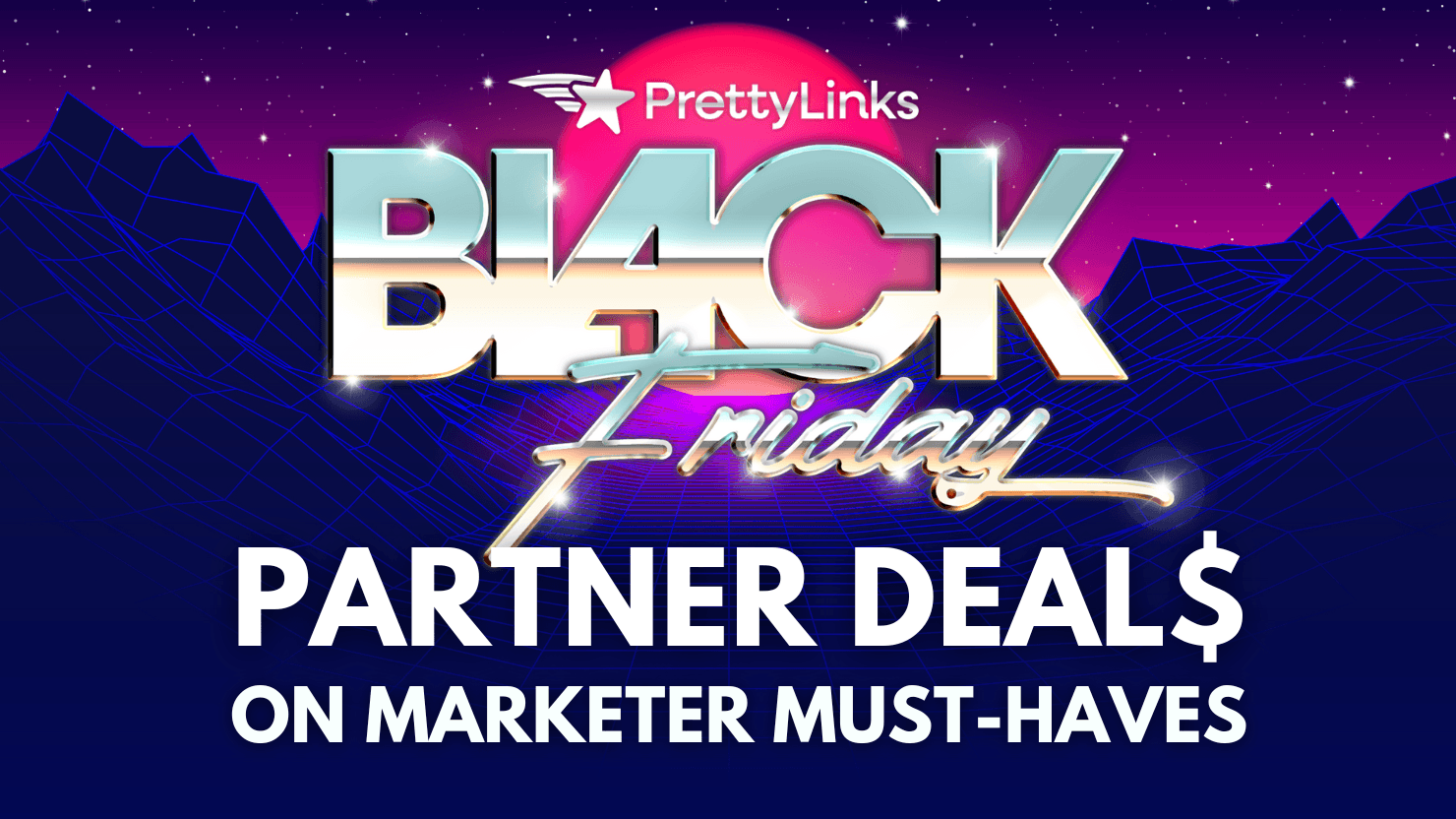
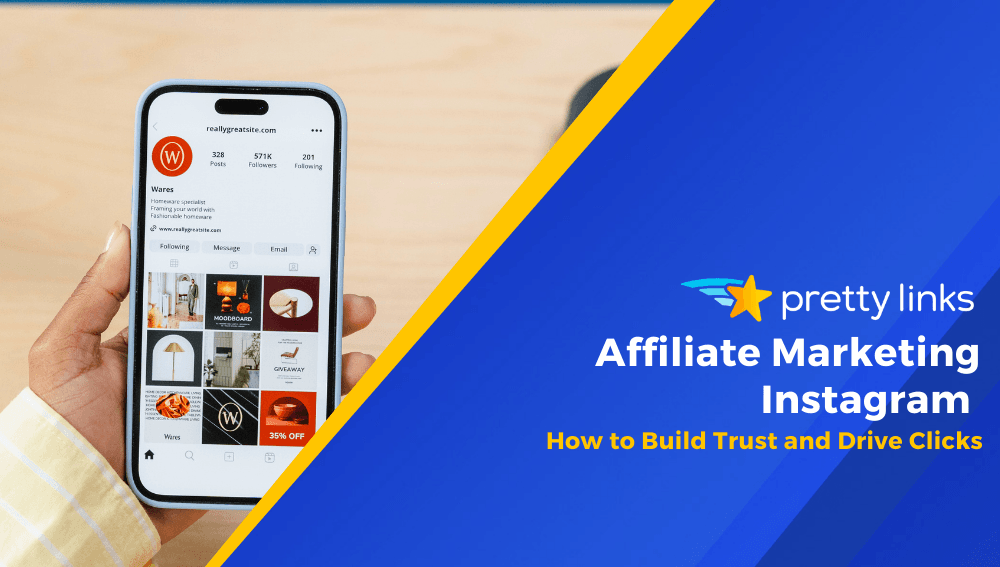
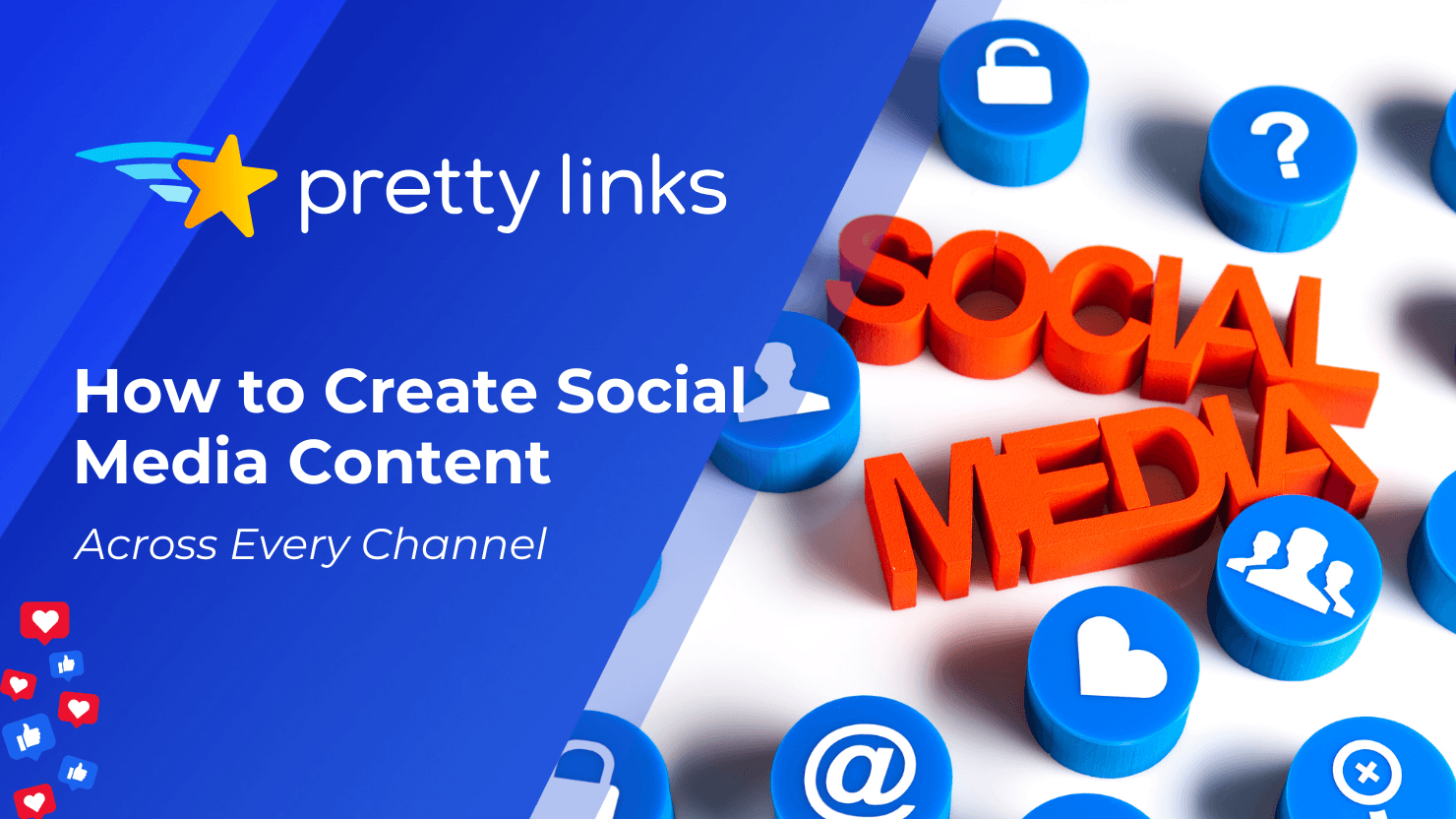
Leave a Reply